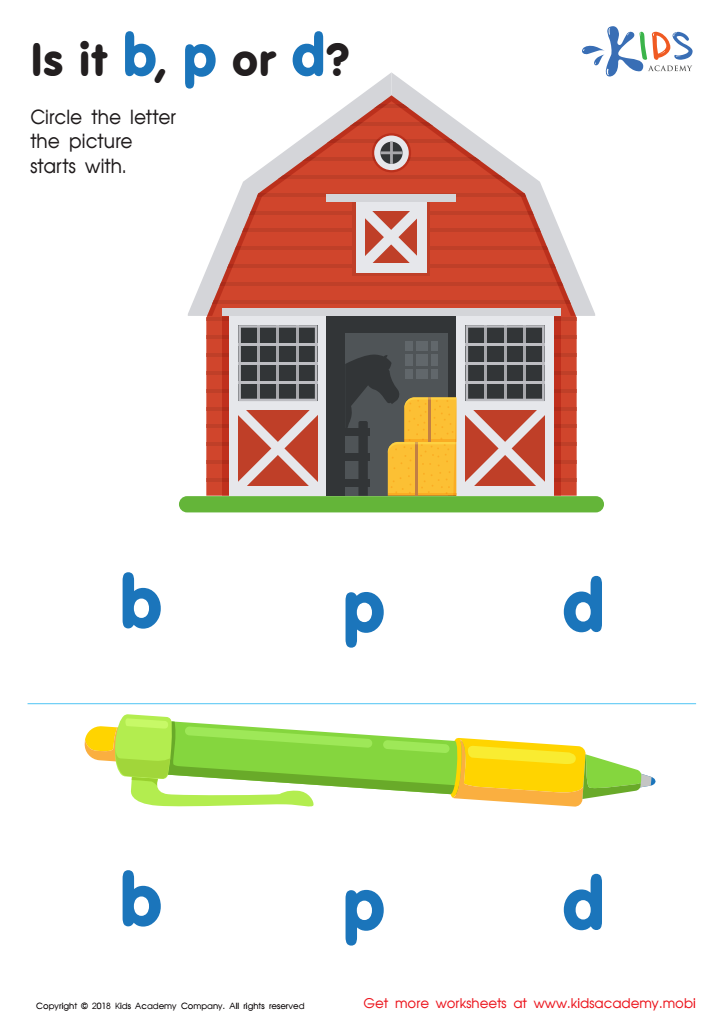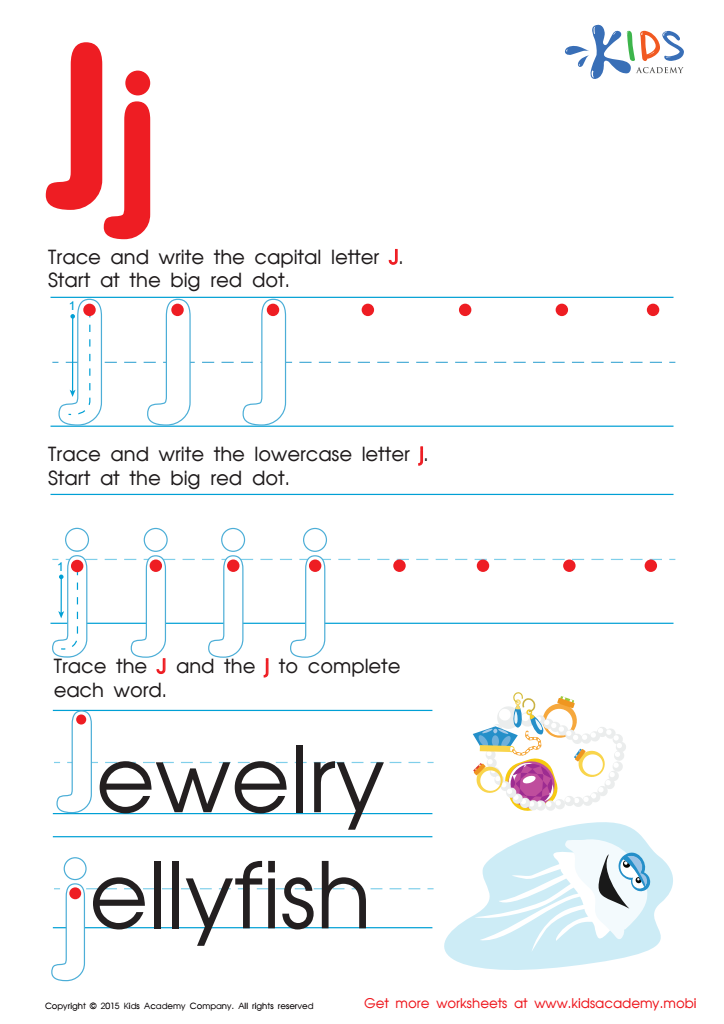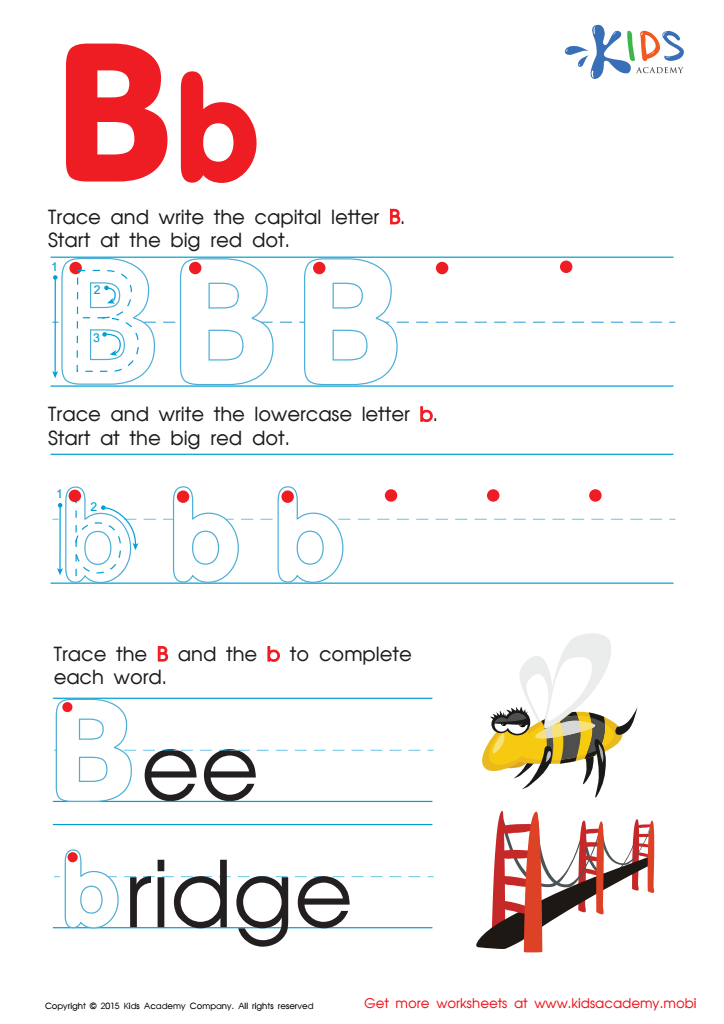Handwriting improvement Normal Letter Recognition Worksheets for Ages 3-6
3 filtered results
-
From - To
Boost your child's handwriting skills with our Handwriting Improvement Normal Letter Recognition Worksheets for Ages 3-6. These engaging and educational printables are designed to help young learners recognize letters and improve their penmanship through fun activities. Ideal for preschoolers and kindergarteners, our worksheets provide a solid foundation for reading and writing success. Encourage your child to trace, write, and identify letters, enhancing their fine motor skills and confidence. Explore our wide range of activities tailored to suit young minds, making learning an enjoyable experience. Start today and watch your child’s handwriting flourish!


Is it b, p or d? Worksheet


Letter J Tracing Page


Letter B Tracing Page
Handwriting improvement and normal letter recognition for children ages 3-6 are critical for their academic and personal development. At this stage, their brains are highly adaptable and can easily acquire new skills with proper guidance. Improving handwriting strengthens fine motor skills, which are crucial for tasks beyond writing, such as tying shoes or using scissors. These skills also facilitate overall hand-eye coordination and cognitive development.
Normal letter recognition is equally vital. It serves as the foundational skill for reading and later academic achievements. Recognition of letters is closely linked to the ability to understand and process written language, a competence that boosts a child’s confidence and motivation to learn.
Having clear handwriting and strong letter recognition paves the way for effective communication. Children learn to express themselves better both on paper and verbally, making it easier for teachers and parents to understand their needs and thoughts.
For teachers, instilling these skills early eases future teaching efforts because a strong handwriting foundation minimizes distractions and frustration. For parents, supporting these skills at home enhances the learning experience, fostering a love of learning and literacy from an early age.
In sum, prioritizing handwriting improvement and letter recognition during early childhood sets up children for educational success, cognitive awareness, and life-long skills that empower them to navigate a written world.

 Assign to My Students
Assign to My Students




















